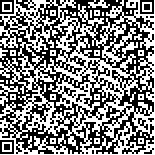| 本文已被:浏览 3946次 下载 2109次 |

码上扫一扫! |
|
|
| 油酸诱导建鲤(Cyprinus carpio var. Jian)肝细胞脂肪变性模型的建立 |
|
杜金梁1,2, 曹丽萍1,2, 贾 睿1,2, 王 涛3, 顾郑琰3, 张春云3, 骆仁军3, 徐 跑1,2,3, 殷国俊1,2,3
|
|
1.中国水产科学研究院淡水渔业研究中心 农业部淡水渔业和种质资源利用重点实验室 无锡 214081;2.中国水产科学研究院淡水渔业研究中心 农业部鱼类免疫药理学国际联合实验室 无锡 214081;3.南京农业大学 无锡渔业学院 无锡 214081
|
|
| 摘要: |
| 通过对油酸诱导时间及有效作用浓度的研究,建立油酸致建鲤肝细胞脂肪变性模型。本研究以胰蛋白酶消化法获得的原代肝细胞作为实验材料,加入不同浓度油酸(0、0.05、0.1、0.2、0.4、0.8 mmol/L)与肝细胞共培养24–48 h,诱导肝细胞脂肪变性,分别收集不同时段的肝细胞及上清液,采用试剂盒测定肝细胞中甘油三酯(TG)、总胆固醇(TC)的含量,同时测定上清培养液中谷丙转氨酶(GPT)、谷草转氨酶(GOT)、γ-谷氨酰转肽酶(γ-GT)、乳酸脱氢酶(LDH)和超氧化物歧化酶(SOD)的活性,MTT法测定肝细胞的存活情况,确定油酸最佳诱导浓度,油红O染色法观察细胞内脂肪滴的形成情况。研究结果显示,0.4 mmol/L油酸与肝细胞共培养48 h,可以显著提高肝细胞内TG、TC含量(P﹤0.05或P﹤0.01),极显著提高上清培养液中GOT、GPT、LDH、γ-GT的活性,显著降低上清培养液中SOD的活性,但与24 h相比有升高趋势,0.4 mmol/L油酸与肝细胞共培养24 h,光镜下可见细胞内有脂肪滴形成,以48 h最明显。综上所述,油酸浓度0.4 mmol/L、诱导时间48 h成功构建了肝细胞脂肪变性模型,为研究鱼类脂肪肝类疾病奠定了基础。 |
| 关键词: 建鲤 肝细胞脂肪变性 油酸 |
| DOI:10.11758/yykxjz.20160112001 |
| 分类号: |
| 基金项目:中央级公益性科研院所基本科研业务费专项资金(2015JBFM01) |
|
| Oleic Acid Induced Hepatocyte Steatosis Model in Jian Carp (Cyprinus carpio var. Jian) |
|
DU Jinliang1,2, CAO Liping1,2, JIA Rui1,2, WANG Tao3, GU Zhengyan3, ZHANG Chunyun3, LUO Renjun3, XU Pao1,2,3, YIN Guojun1,2,3
|
|
1.Key Laboratory of Freshwater Fisheries and Germplasm Resources Utilization, Ministry of Agriculture, Freshwater Fisheries Research Center, Chinese Academy of Fishery Sciences, Wuxi 214081;2.International Joint Research Laboratory for Fish Immunopharmacology, Freshwater Fisheries Research Center, Chinese Academy of Fishery Sciences, Wuxi 214081;3.Wuxi Fisheries College, Nanjing Agricultural University, Wuxi 214081
|
| Abstract: |
| Fatty liver was a common disease in aquaculture. In recent years, the occurrence of fatty liver in fish has significantly increased, but the mechanism of this disease remains unclear. Most researches have focused on the pathogenesis of the disease, while little is known at the cellular level. In this study, we used primary hepatocyte culture of Jian Carp (Cyprinus carpio var. Jian) as the experimental material, and induced the hepatocyte injury by optimal exposure (dose and time) to oleic acid. The hepatocytes of Jian Carp were isolated and purified with trypsin digestion and then were cultured in a medium. To identify the proper concentration of oleic acid, the hepatocytes were treated with a gradient of concentrations (0, 0.05, 0.1, 0.2, 0.4, 0.8 mmol/L) for 24–48 h, and the supernatants and hepatocytes were then collected at different time points. We measured the contents of multiple biochemical parameters in the collected samples, including triglyceride (TG) and the total cholesterol (TC), as well as the activities of enzymes such as alanine aminotransferase (GPT), aspartate aminotransferase (GOT), γ-glutamyltranspeptidase (γ-GT), lactate dehydrogenase (LDH), and superoxide dismutase (SOD). We also determined the survival rate of hepatocytes using the MTT method. Lipid droplets in the cells were observed using the oil red staining method. Our results suggested that the cultured hepatocytes grew properly with a normal morphology, and that the hepatocytes could be used for the study of lipid metabolism. After the oleic acid treatment at different concentrations of oleic acid for 24–48 h, we found that the exposure to 0.4 mmol/L oleic acid for 48 h significantly elevated the levels of GOT, GPT, LDH, TG,TC, and γ-GT, but reduced the activity of SOD (P﹤0.05 or P﹤0.01). Lipid droplets were detected in the hepatocytes under light microscope after the treating with 0.4 mmol/L oleic acid for 24–48 h. The biochemical indices described above indicated that 0.4 mmol/L oleic acid and 48 hours could be the optimal conditions to induce hepatocyte steatosis in cultured hepatocytes. Therefore, in this study we successfully established a hepatocyte steatosis model that will be a useful tool in the future study of fatty liver disease in fish. |
| Key words: Jian carp (Cyprinus carpio var. Jian) Hepatocyte steatosis Oleic acid |